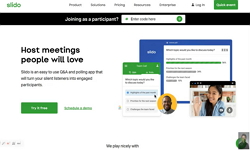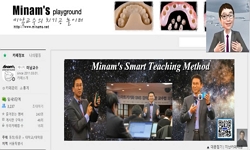이 연구는 언택시대 대학 비대면 수업으로 실시한 교양교육 수업에서 학생들이 대학 직업기초능력에 대한 수업전후 2회의 자기평가를 통해 그 성과를 분석하고 비대면 수업에 대한 발전 방...
http://chineseinput.net/에서 pinyin(병음)방식으로 중국어를 변환할 수 있습니다.
변환된 중국어를 복사하여 사용하시면 됩니다.
- 中文 을 입력하시려면 zhongwen을 입력하시고 space를누르시면됩니다.
- 北京 을 입력하시려면 beijing을 입력하시고 space를 누르시면 됩니다.

대학 교양교육 비대면 수업의 대학생 직업기초능력 자기평가 성과분석 연구 = A Study on the Performance of Self-evaluation of Vocational Basic Competency in Non-face-to-face Classes in College Liberal Arts
한글로보기https://www.riss.kr/link?id=A108127833
- 저자
- 발행기관
- 학술지명
- 권호사항
-
발행연도
2022
-
작성언어
-
- 주제어
-
KDC
370
-
등재정보
KCI등재
-
자료형태
학술저널
-
수록면
421-436(16쪽)
- 제공처
-
0
상세조회 -
0
다운로드
부가정보
국문 초록 (Abstract)
이 연구는 언택시대 대학 비대면 수업으로 실시한 교양교육 수업에서 학생들이 대학 직업기초능력에 대한 수업전후 2회의 자기평가를 통해 그 성과를 분석하고 비대면 수업에 대한 발전 방안을 제안하는 데 그 목적이 있다. 연구 대상은 소속 대학에서 개설된 교수자의 교양과목 2개 강좌 2개반씩 총 4개반 수업을 수강하는 학생들이다. 연구 방법은 교수자가 먼저 국가직무능력표준과 직업기초능력에 대한 설명 자료를 만들고, 직업기초능력의 10개 요인과 34개 요소에 대해 Lykert식 5점 척도를 활용한 진단지를 개발하였다. 수업 첫 주 사전진단 평가로서 국가직무능력표준과 직업기초능력을 설명하고 제작한 직업기초능력 진단지를 사이버캠퍼스에 올렸다. 학생들이 이를 다운 받아 자기 평가하여 진단지를 작성한 후 교수 메일로 보냈다. 똑 같은 방식으로 수업 마지막 주에도 사후 평가와 비대면 수업에 대한 의견조사를 하여 수업 전후 직업기초능력의 성과를 분석하였다. 대학생 직업기초능력 수업전후 자기평가 결과는 10개의 직업기초능력 및 34개의 하위요소들은 .001 수준에서 모두 유의한 차이를 보이고 있다. 학년별 및 교과별로는 유의한 차이가 나타나지 않았다. 더불어 조사한 비대면 동영상 수업에 대한 설문조사에서 학생들은 효과적이라는 반응은 31%, 비효과적 이라는 반응은 69%로 나타났다. 비대면 동영상 수업 유형의 장점으로는 반복 청취가 67.7%, 시간 활용이 22.9%로 높게 나타났으며, 단점으로는 주별과제 부담이 44.3%, 교수학생 관계형성 미흡이 20.6%, 수강생 소통 부족이 17.5% 순으로 나타났다. 비대면 수업의 적당한 비율에 대해서는 20%이상 50%미만 구간에 대해 49.4%로 가장 높게 반응하였다. 이상의 학생들의 수업전후 직업기초능력 자기평가 결과와 비대면 수업에 대한 의견조사 결과를 근거로 학생, 교수, 대학과 국가 수준의 향후 정책을 제안하였다. 학생은 국가직업기초능력 자기 진단과 성과 관리를 주기적으로 시행 관리해야하며 교수는 교양교육 과목을 통한 국가직업기초능력 신장과 비대면 온라인 수업 역량을 강화해야 한다. 대학은 사이버시스템 업그레이드와 국가직업기초능력 향상을 위한 교과목 개발 및 관리시스템 정착이 필요하고, 국가는 사이버시스템 성능 강화를 위한 재정지원 확대와 국가직업기초능력을 신장하는 교양교육 운영 매뉴얼 및 우수사례집 개발이 필요하다.
다국어 초록 (Multilingual Abstract)
The purpose of this study is to analyze the outcome of instruction and the implication of improving university student’s vocational basic competency evaluation of non-face instruction in the “untact” era. The contents of this study were the theo...
The purpose of this study is to analyze the outcome of instruction and the implication of improving university student’s vocational basic competency evaluation of non-face instruction in the “untact” era. The contents of this study were the theorectical analysis of competency-based evaluation, and the different analysis of Vocational Basic Competency between pretest and post-test self-evaluation surveys. The subjects of this study were the students enrolled in two Leadership instructional programs and two interpersonal relations instructional programs in the field of liberal arts at Shinhan University. Looking at the results of this study, the results of self-evaluation of the vocational basic competency of students before and after class showed significant differences at the 0.01 level in all 10 vocational basic competency categories and 34 sub-elements. There was no significant difference when it came to the grade and subject of the students. In addition, in the survey on non-face-to-face video classes, 31% of students responded that they were effective, while 69% said such classes were ineffective. The advantages of the untact video classes were 67.7% for repeated listening and 22.9% for time utilization. According to the students, the disadvantages of the untact video classes were as follows: 44.3% for the burden felt by weekly tasks, 20.6% for the lack of rapport between the professor and the students, and 17.5% for the lack of student communication. As for the appropriate ratio of untact classes, 49.4% responded that a proper ratio would be in the range of 20% to 50%. Based on the above students self-evaluation results of vocational basic competency before and after class, and the results of opinion surveys regarding untact classes, future policies are proposed at the student, professor, university, and national level. Students need to self-diagnose and manage their vocational basic competency. Also, professors need to strengthen the national competency ability, and strengthen their untact online class capabilities. Universities need to upgrade their cyber systems, establish a curriculum development program, and develop management systems to improve vocational basic competency. The state needs to expand its financial support to strengthen the performance of cyber systems and to develop a manual for the operation of liberal arts education, as well as to compile a collection of best practices to enhance vocational basic competency.
목차 (Table of Contents)
- 1. 서론 2. 연구 방법 3. 역량중심 직업기초능력에 대한 이론적 배경 4. 학생 직업기초능력 자기 평가 결과 5. 논의 및 발전 방안 6. 결론 및 제언
- 1. 서론 2. 연구 방법 3. 역량중심 직업기초능력에 대한 이론적 배경 4. 학생 직업기초능력 자기 평가 결과 5. 논의 및 발전 방안 6. 결론 및 제언
동일학술지(권/호) 다른 논문
-
- 한국교양교육학회
- 손종현(Son, Jong-Hyun)
- 2022
- KCI등재
-
대학 학습공동체 활동성과에 따른 참여역량 분석 : 일반집단과 우수집단 간 비교를 중심으로
- 한국교양교육학회
- 김주연(Kim, JooYeon)
- 2022
- KCI등재
-
타 대학 교류 경험에 대한 대학생의 인식 : 대학 연합 비교과 프로그램 사례
- 한국교양교육학회
- 한송이(Han, Song Ie)
- 2022
- KCI등재
-
비대면 코칭 기반 대학 비교과 프로그램 개발 및 효과성 : S여자대학교를 중심으로
- 한국교양교육학회
- 김경아(Kim, Kyoung A)
- 2022
- KCI등재




 KCI
KCI 스콜라
스콜라






